Mike Kamber has had many, many lives. The founder and executive director of the Bronx Documentary Center worked as a documentary photographer for over two decades, and his work has twice been nominated for a Pulitzer Prize. He lived in the Bronx for a period in the 1980s and dreamed of making an educational space that would bring arts and education to the South Bronx. Founded in 2011, the Bronx Documentary Center is a nonprofit organization and mecca for photography lovers.
We asked Kamber about the photographers and images that have influenced him over his lengthy career. One of the photographs that influenced him was taken by his friend Tim Hetherington, who died in Libya in 2011 and with whom he’d discussed starting a photo nonprofit. Kamber’s mother, also a photographer who lives in Maine, was one of his early inspirations.
Here are just a few of the photographers and works that inspire Kamber.
1. Larry Burrows, Vietnam, 1966
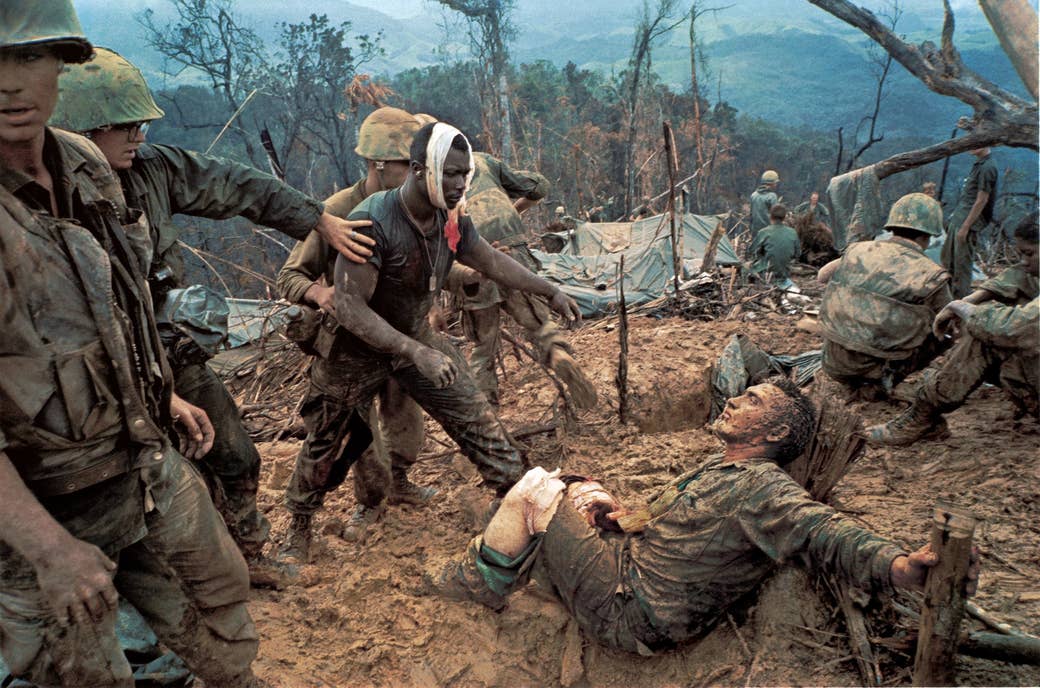
I was born in 1963, and my first memories photographically are images from Vietnam. Larry Burrows was easily the greatest color photographer of that generation, and his photos were the ones that affected me first — I saw them in Life magazine. And Burrows’ photos of war are not heroic — no war photo should ever be heroic. Yet Burrows’ photo here of a wounded soldier reaching out to help another wounded soldier lying on the ground is biblical in scope and brilliant in composition. It gives you a sense of the quagmire that was the Vietnam War.
Burrows was shooting Kodachrome with a Leica M4: no light meter, extremely difficult to get the light right, and no room for error. And yet Burrows’ use of light and color reminds me of Goya's paintings of war from hundreds of years earlier. To me, this is just an epic, sad, and futile photo of war — but also says something about brotherhood and sacrifice. Larry Burrows was killed alongside Henri Huet, another of my favorite photographers, when their helicopter was shot down in 1971.
2. Hannah Kamber, Maine, 1969
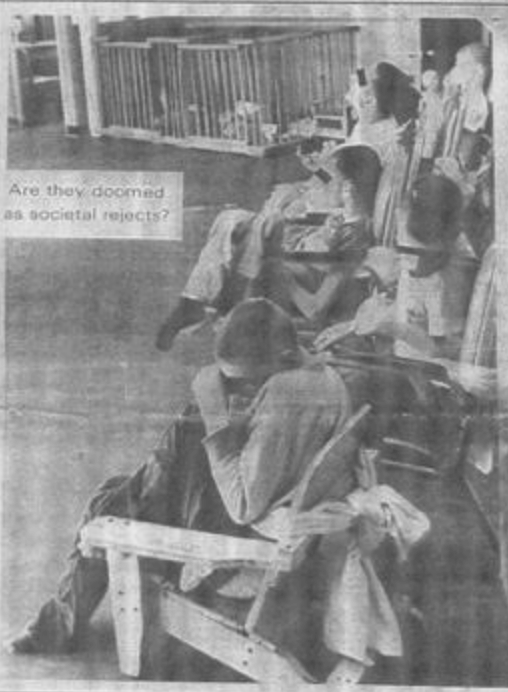
My mother, Hannah Kamber, took this picture in 1969 at Pineland, a notorious facility for the developmentally disabled up in Maine, the state where I grew up. She worked briefly as a photographer for the Maine Times shooting in the 1960s and covering important social issues — or at least issues that were important to her. The Maine Times was an alternative newspaper — they were sprouting up across the country then and usually focused on investigations and providing a counterpoint to the mainstream press. And the Maine Times gave my mother freedom to go out and do what she wanted. She talked her way into Pineland somehow. As she told it, there was someone on the inside who wanted to see real change. And she photographed people chained to the floor in pools of urine, filthy and forgotten. The state of Maine started an investigation based on her photos and changed the laws regarding the treatment of our special needs population. This photo showed me that photojournalism could make a real difference in people’s lives.
3. Danny Lyon, 1966
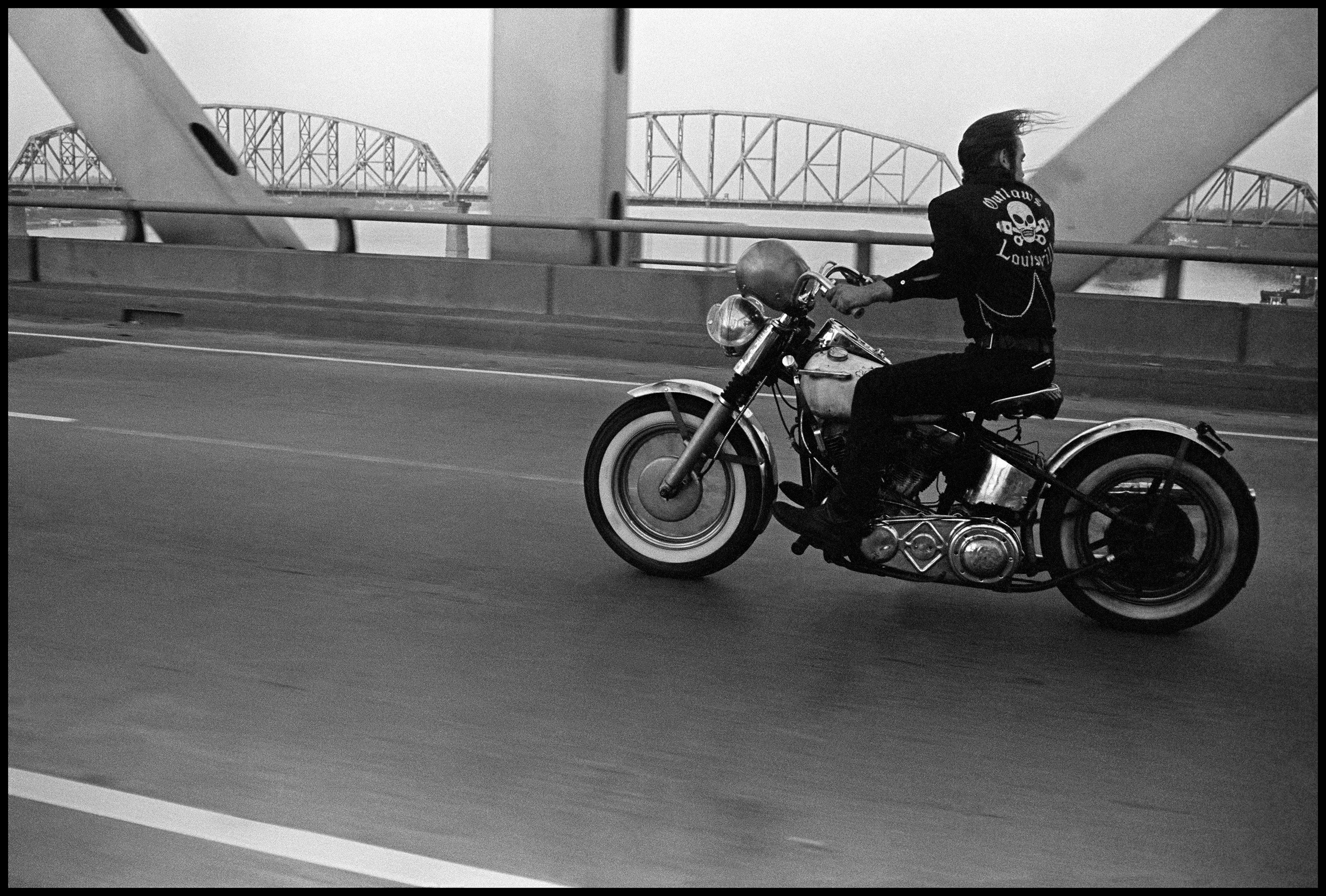
This photo by Danny Lyon was from his Bikeriders series. Danny's photos were important to me because when he immersed himself, he went all the way. His photos from the civil rights movement were from the inside, not the outside. When he did his prison book, Conversations with the Dead, he spent months inside the prison, in the subblocks, and actually printed copies of the book clandestinely in the prison workshop. In this photo, he was in deep with the Chicago outlaws as a member of the motorcycle gang, and his photos show an intimacy that no visiting photographer can touch. Danny is also a master of composition and movement and light and knows when to leave space around a photograph. But I've learned a lot, looking at his photos. Him and Robert Frank. Of course, from Danny, I learned that you had to commit all the way, that you couldn't come in and do a toe touch for an hour or a day and then escape back to your comfortable life. If you're committed, you went all the way.
4. Tim Hetherington, Liberia, 2005
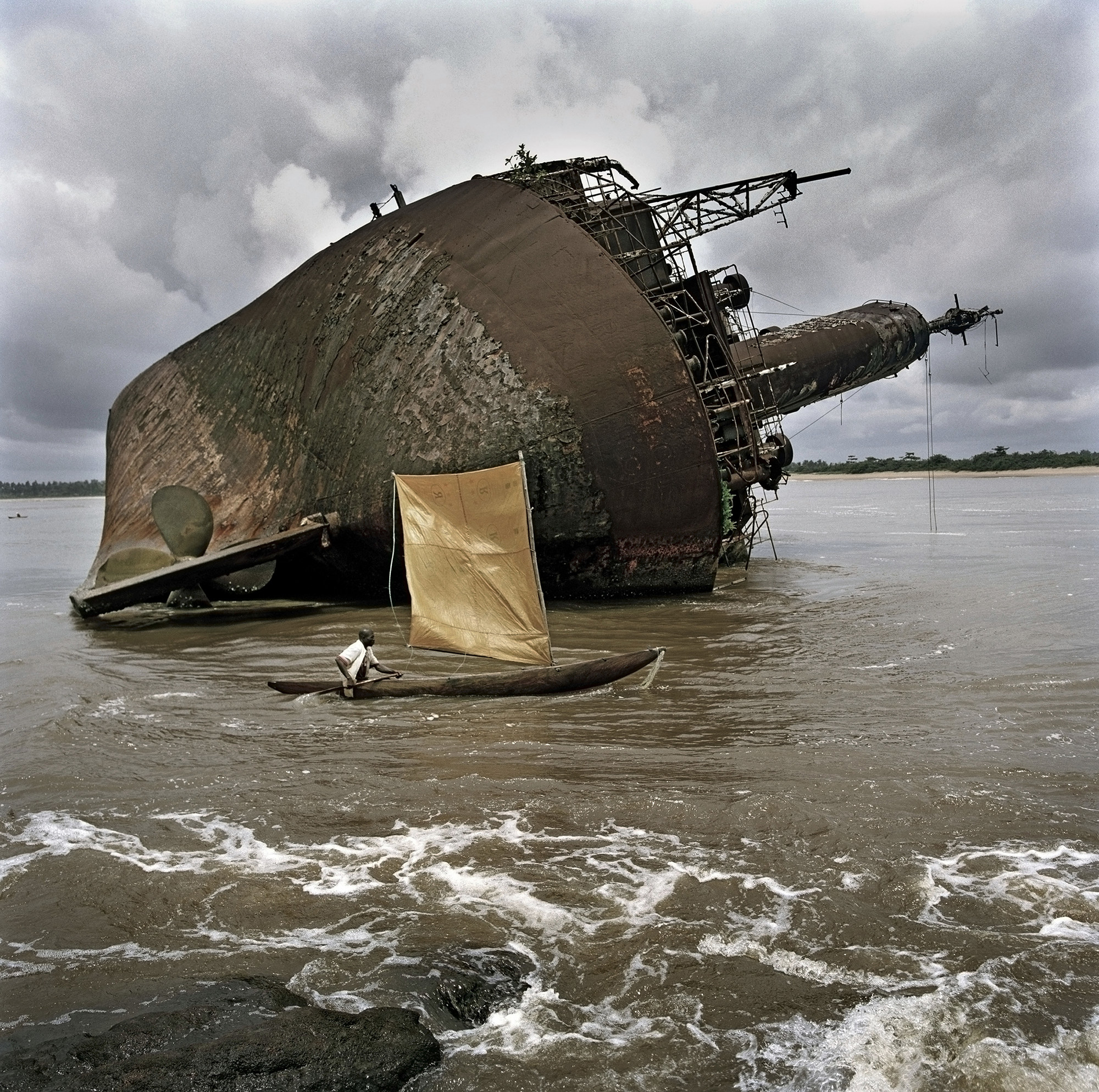
This photo is by my friend Tim Hetherington, who was killed in 2011, and his death pushed me to start the Bronx Documentary Center, which he really helped plan out. We talked about a nonprofit like this for a couple of years. And when Tim was killed in the civil war in Libya, a group of friends came together and helped me get the BDC going.
I guess you could call him a war photographer, but he was never interested in pictures of people shooting guns, and in that way he was like Larry Burrows and Henri Huet. He was always looking for something that showed how the wars were fought on the backs of civilians. Tim studied the classics and knew the Homeric wars, chapter and verse. He saw conflict as a modern tragedy, a sort of farce, that leaders played out, destroying the lives of men, women, and children along the way. I always loved this photo because it showed what war had done to the Liberian economy. It was once one of the fastest growing in West Africa. And by the time Tim and I got there in 2003, the country was in complete shambles. There'd been no electricity or running water for years, but we were lucky enough to finally come to the country.
5. Mike Kamber, Iraq, 2003
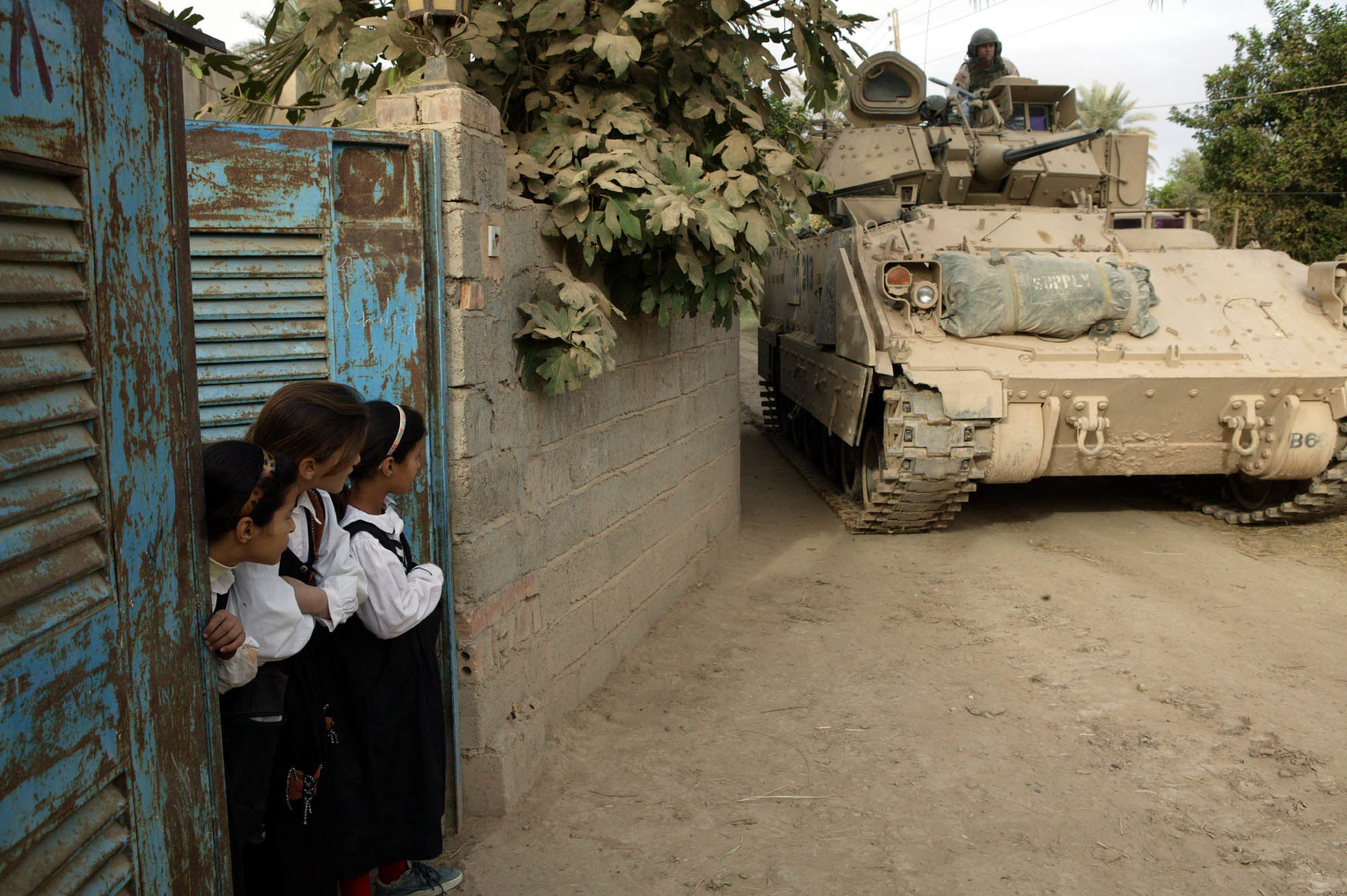
I took this photo on an early morning raid in Balad, Iraq, in 2003, as the Iraq War was just ramping up. The New York Times had sent me in. In September, we all thought combat operations were over — little did we know, I was just getting started, went out with some soldiers from the Fourth Infantry Division. They were getting ambushed daily and starting to lose soldiers. They responded with early morning raids, smashing down doors, dragging men out of bed so they [could] search for weapons, and I saw these girls getting ready to go off to school as a Bradley fighting vehicle rumbled by, waited, and grabbed the photo. It's a photo that has always struck people. I think it's simply the juxtaposition. It might be a bit cliched, but it's real. We're fighting this war in people's front yards. And that's why hundreds of thousands of Iraqis are dead as a result.
5. Mike Kamber, Iraq, 2007
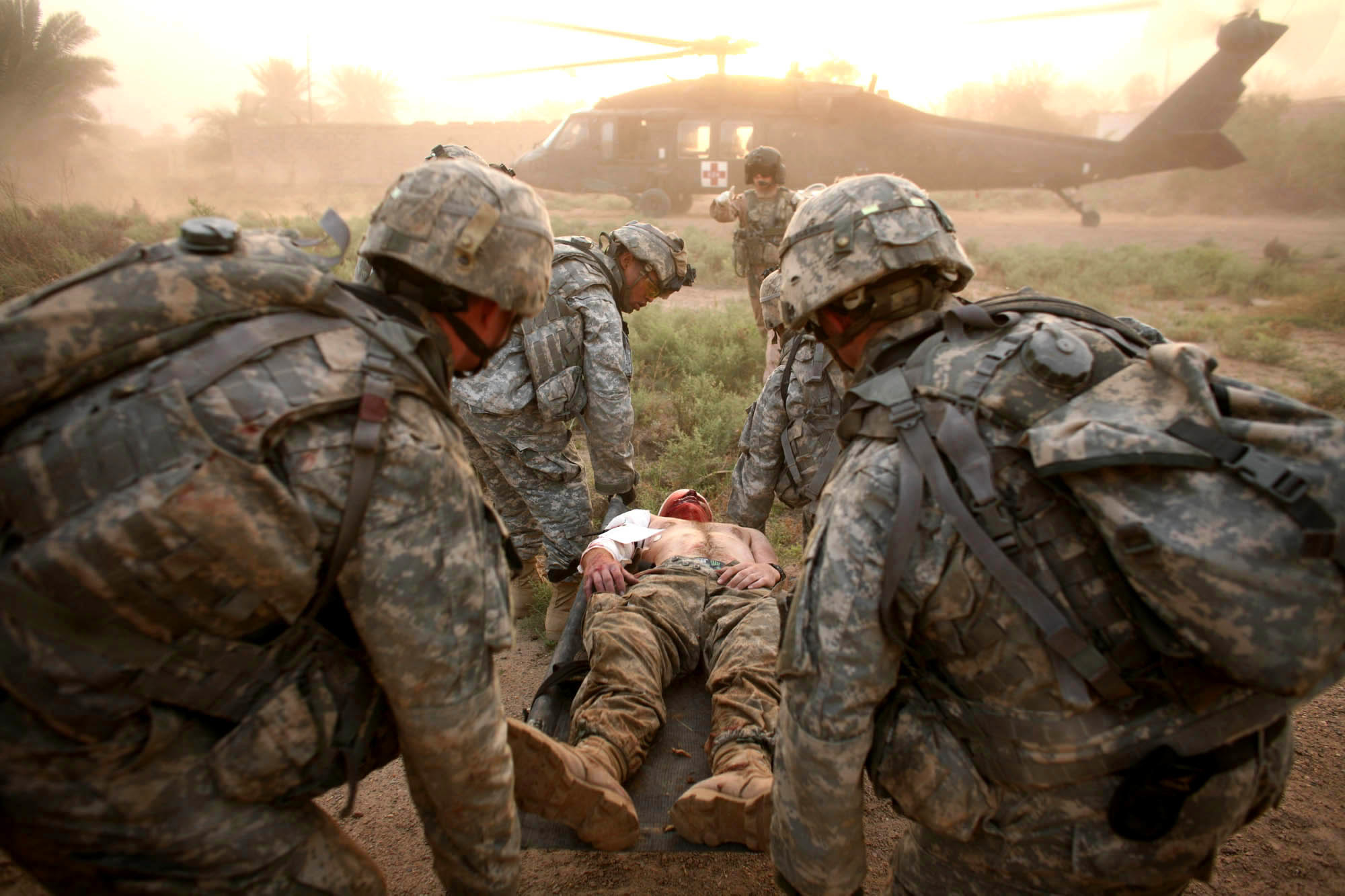
I took this photo in Iraq in 2007, [which] was the bloodiest year of the war. I went with Damien and Diana Cave, a husband and wife who are also a reporter and videographer, into the Sunni triangle to do a story on some American soldiers who had been ambushed and kidnapped. They eventually turned up dead. As American soldiers went out to search for them, they also were being ambushed and killed. We went out before dawn with the 10th Mountain Division, and as we walked down trails through the countryside and the sun began to creep up over the horizon, I stepped over a landmine [that] had been buried in the trail and a guy behind me stepped on it and was killed instantly. A number of others were wounded, and I helped bandage them as I photographed. The Pentagon tried to stop publication of these photos. I actually had a bizarre phone call with a colonel in Washington, DC, who kept coming up with new reasons why I couldn't publish these photos. The New York Times backed me, and we published them anyway. When Damien Cave went back to see the unit, a year or two later, they called him into a conference room. He went in with some trepidation, afraid of what might happen. Instead, the soldiers thanked him profusely for telling Americans back home what the war was really like and showing people their sacrifices.
6. Mike Kamber, Nigeria, 2005

This photo is important to me because it's one of the first ones I ever took that really showed environmental devastation happening on this planet. In the States, the big corporations are very sophisticated, and they know how to hide the damage that they're doing. But when you go to Africa, it's just right there. They think no one is paying attention. I took this photo in Nigeria, in 2005, before there were really cell phone cameras around. The New York Times ran it on the front page. It served as a small piece of evidence of how several petroleum companies continue to flare gas to the present day and it is one of West Africa's major contributors to pollution and climate change.
This picture shows young children playing at night in their village, which is bisected by massive pipelines and gas players. Gas is a byproduct of the company's drilling for oil. And they burn off millions and millions of cubic feet of it, destroying the environment and warming the planet.
7. Mike Kamber, South Bronx, 1988
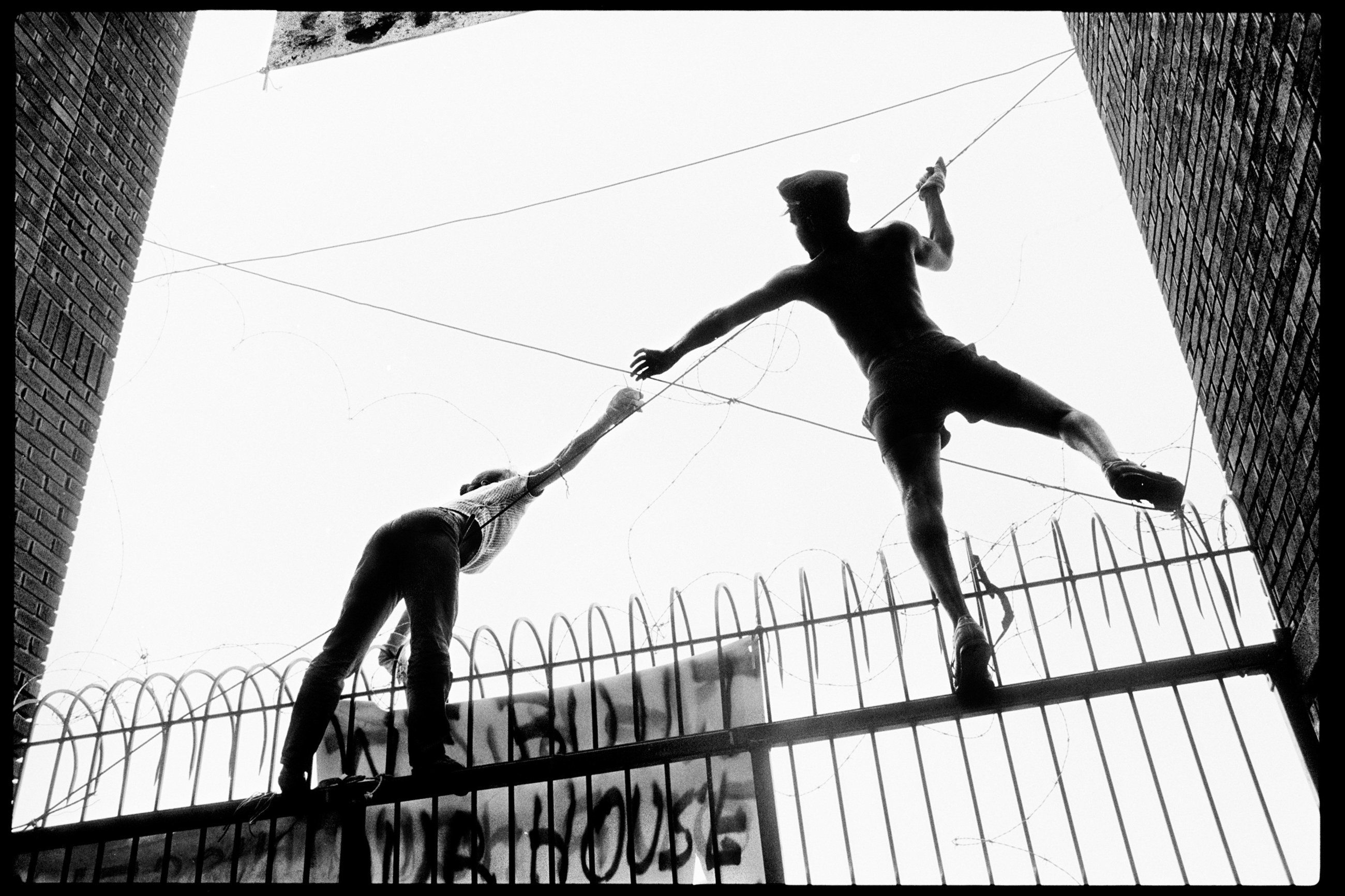
I took this picture in the South Bronx in 1988; I believe there was a building full of artists who are squatting in an abandoned building around the corner from where I lived on Willis Avenue, got to know them, and began to photograph their struggle, as the city started to evict them. In this photo the squatters are stringing barbed wire to keep city marshals from entering the building and evicting them. I was relatively young; I was still working construction and learning to photograph at night and on the weekends. I learned the importance of finding a good story with good visuals and access, to tell the story of what people were going through and get at the larger social issues around poverty, race, and class that were dividing America then, and are dividing America even more so now.
8. Trevon Blondet, 2019
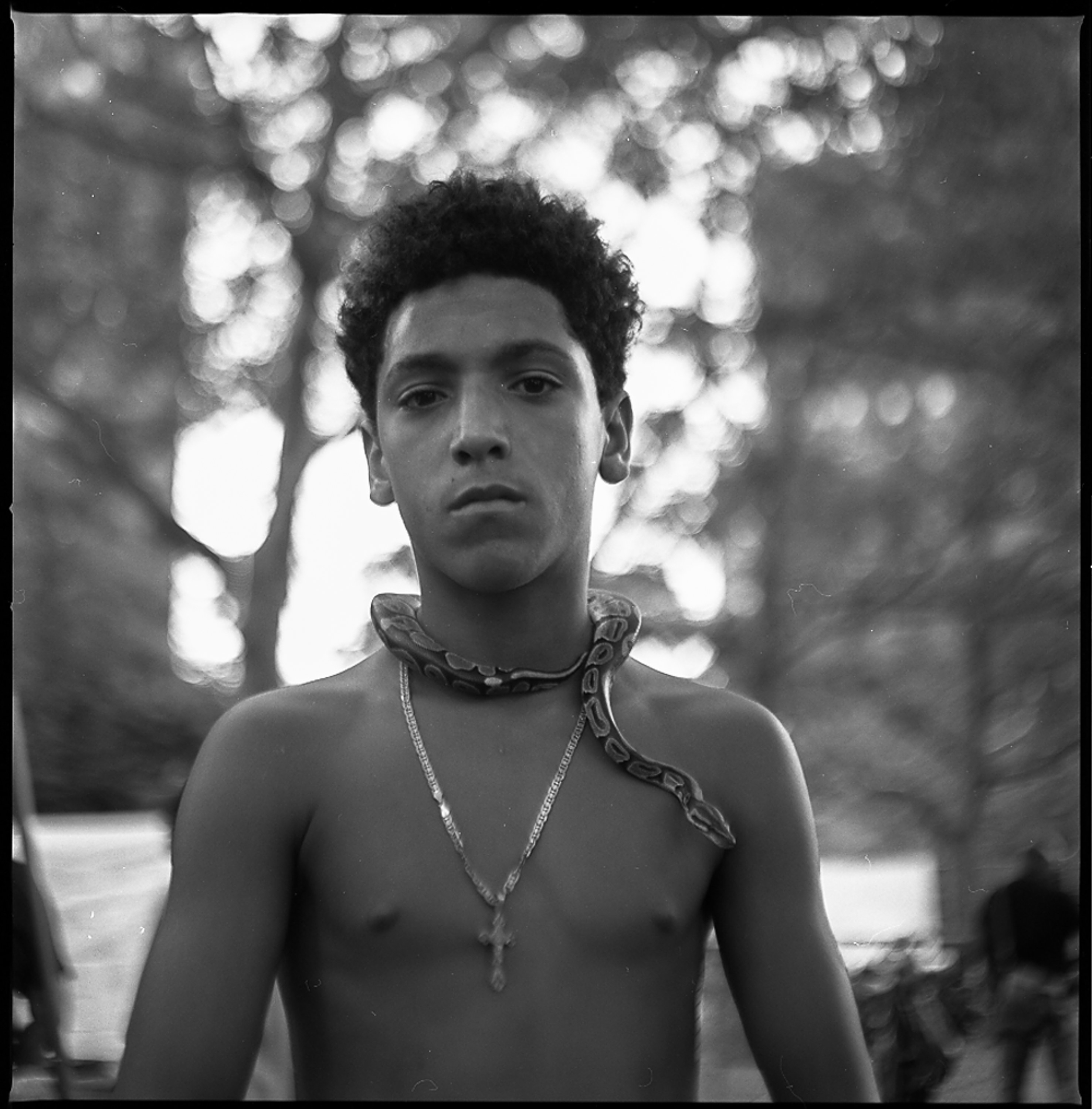
This photo is by Trevon Blondet — he’s part of a group of Bronx photographers that I’ve been helping to train for quite a few years. Trevon has really taken to shooting black and white film with an old Hasselblad camera, and he’s great with people and has a real instinct for a good photo. He’s been doing portraits in a Bronx housing project where he once grew up, and I love everything about this photo: the composition, light, and feeling of a confident young man trying to move into adulthood on a hot summer afternoon in the South Bronx. And of course it’s incredibly rewarding to see a student like Trevon take what you show him and then surpass you.
9. Johis Alarcón, Cimarrona
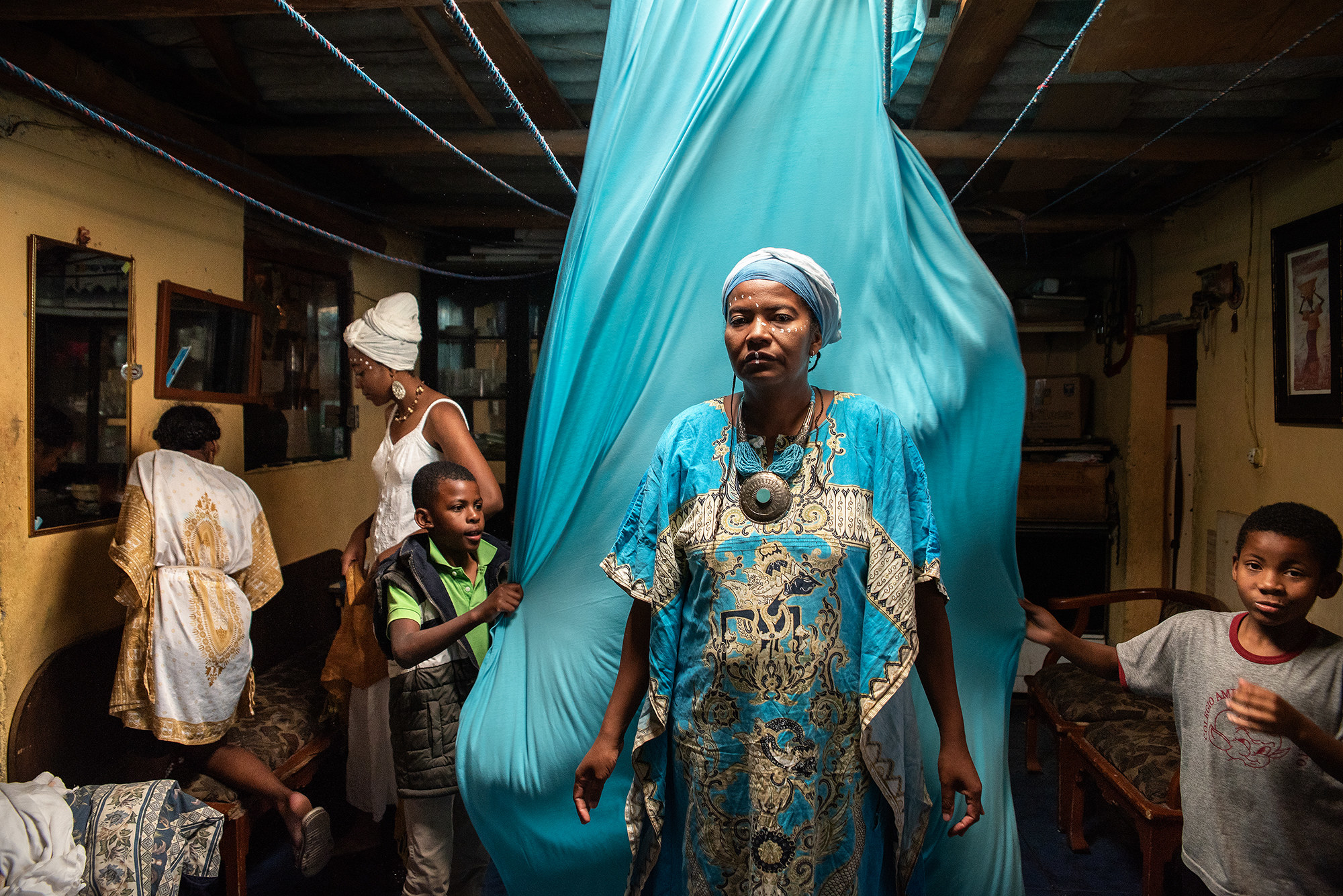
This photo is by Johis Alarcón, and she’s been part of our Latin American Photo Festival that we put on every year here in the Bronx. Johis has been working on all kinds of social, humanitarian, and gender issues in Ecuador as well as documenting indigenous religious and cultural practices throughout the country. She really connects with people and has a wonderful sense of color, movement, and emotion in her photos. In her work, there is also a sense of trying to capture something that is threatened, that may not last, and that has to be seen and remembered. There is a tremendous documentary photography movement happening throughout South and Central America, most of it based on photo collectives, and Johis is part of that movement.
10. Stephanie Sinclair, "Child Brides," 2010
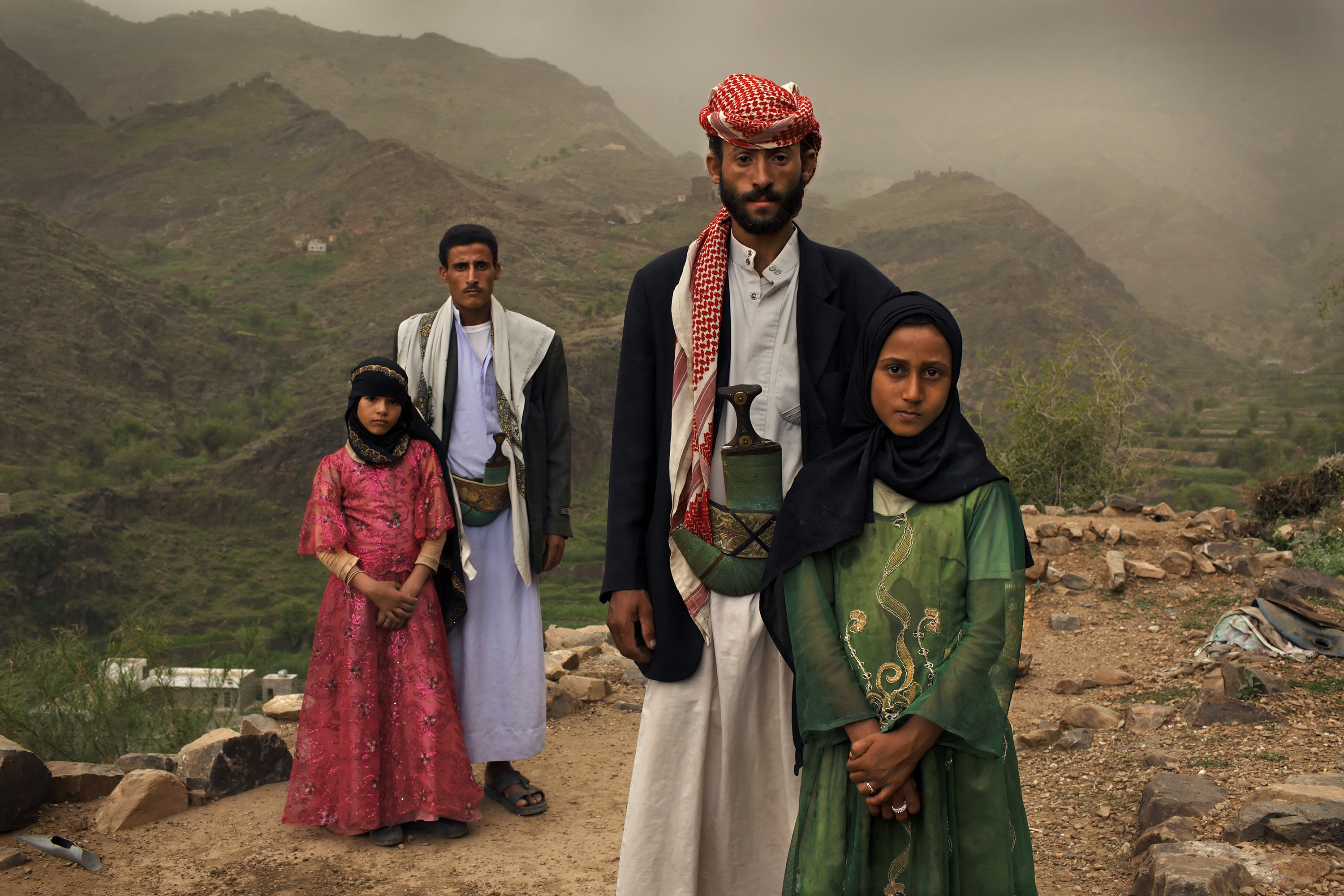
I’ve worked with Stephanie Sinclair going back to the Iraq War, and we’ve exhibited her Too Young To Wed project at the Bronx Documentary Center, where it made an enormous impact on the community. Stephanie has been working on this project for a decade in dozens of countries. This photo is from Yemen, where Stephanie documented a tradition of young girls being married off to older men. For me, this photo really brings home the exploitation of young girls all over the world as they are forced into various kinds of subjugation. It varies by region and culture, but it’s happening everywhere. Too Young to Wed has been shown around the globe and — in the best tradition of photojournalism and documentary photography — brought major attention to this issue.
UPDATE
Larry Burrows and Henri Huot were killed in 1971, not 1970, as an earlier version of this post stated.
